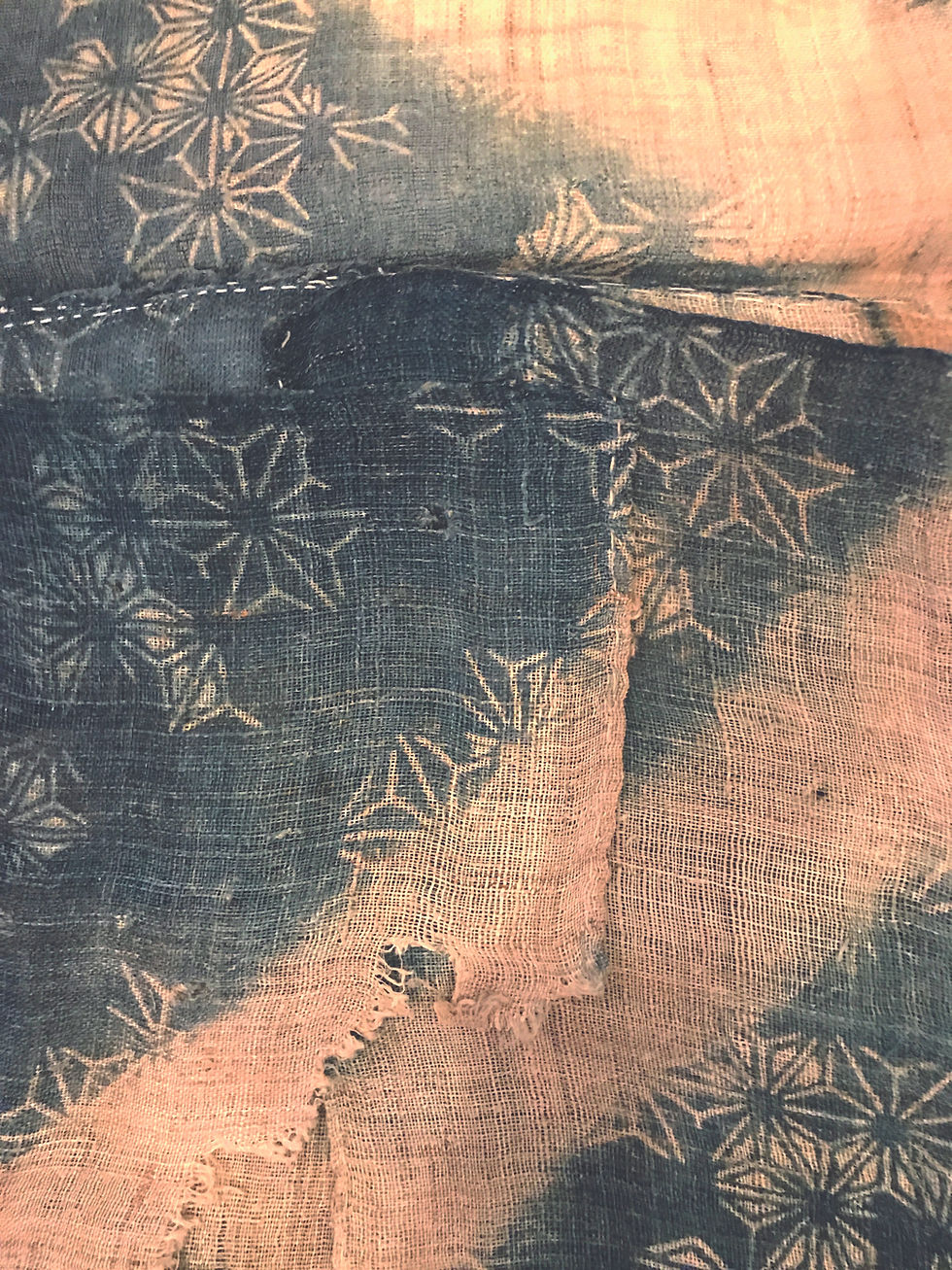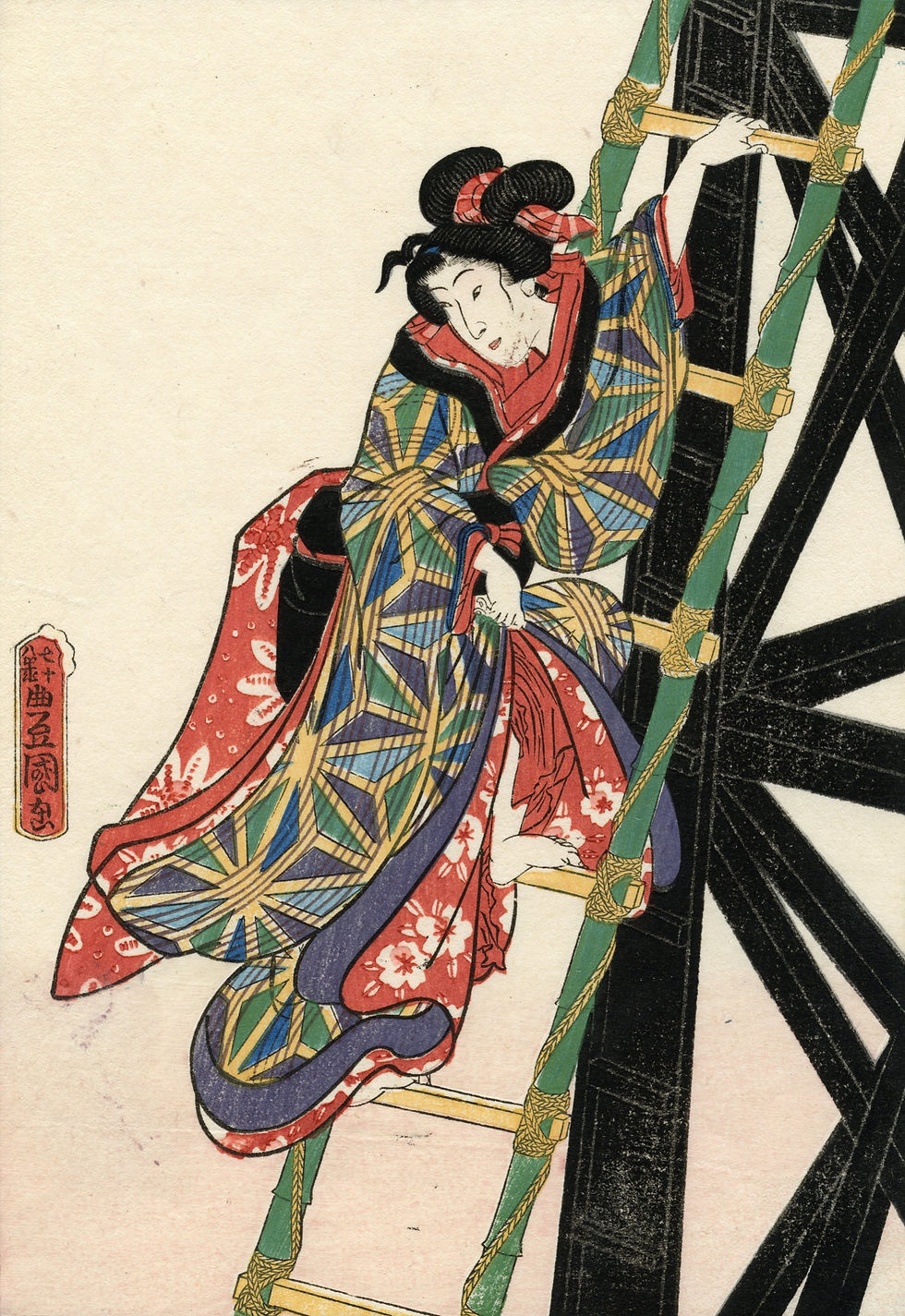Hemp Leaf Motif
- Robert Clarke
- Jun 21, 2023
- 1 min read
The asa-no-ha hemp leaf is one of Japan's iconic motifs incorporated into international design worldwide.

Hemp kimono fabric with asa-no-ha hemp leaf motifs.
"A position hemp has acquired in Japanese culture is in stylistic depictions of the hemp leaf. The readily recognized asa-no-ha motif symbolizes purification and is often stylistically depicted not only on textile objects, such as this hemp linen kimono fragment, but also on other objects such as porcelain. Hemp linen has been given symbolic meaning by many Asian cultures, such as the Hmong ethnic group from southwestern China."

The asa-no-ha hemp leaf motif represents the resilient growth of young hemp plants and has long been associated with the spirit and beauty of youth.

Kaya mosquito nets were often woven from fine hemp yarn.
Note the asa-no-ha hemp leaf motif of the tatami covers.

The iconic asa-no-ha hemp leaf motif often appeared in the ladies' costumes worn by male kabuki actors.

The tsuba (鍔 or 鐔) hand guard with asa-no-ha hemp leaf motif and
kashira (頭) pommel with Shinto shrine shimenawa motif both reflect associations between samurai culture and the hemp plant.
コメント